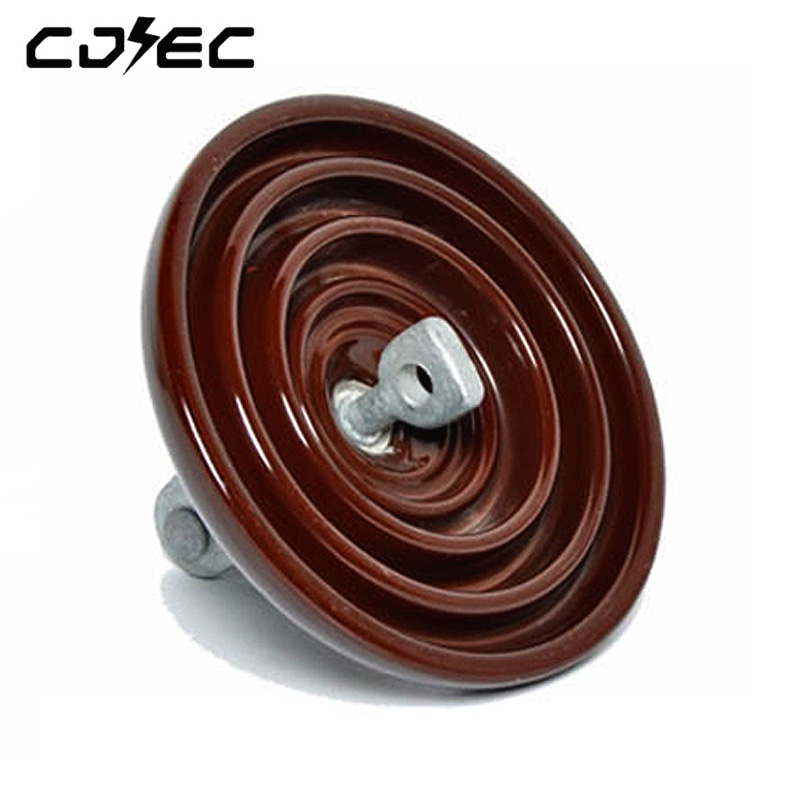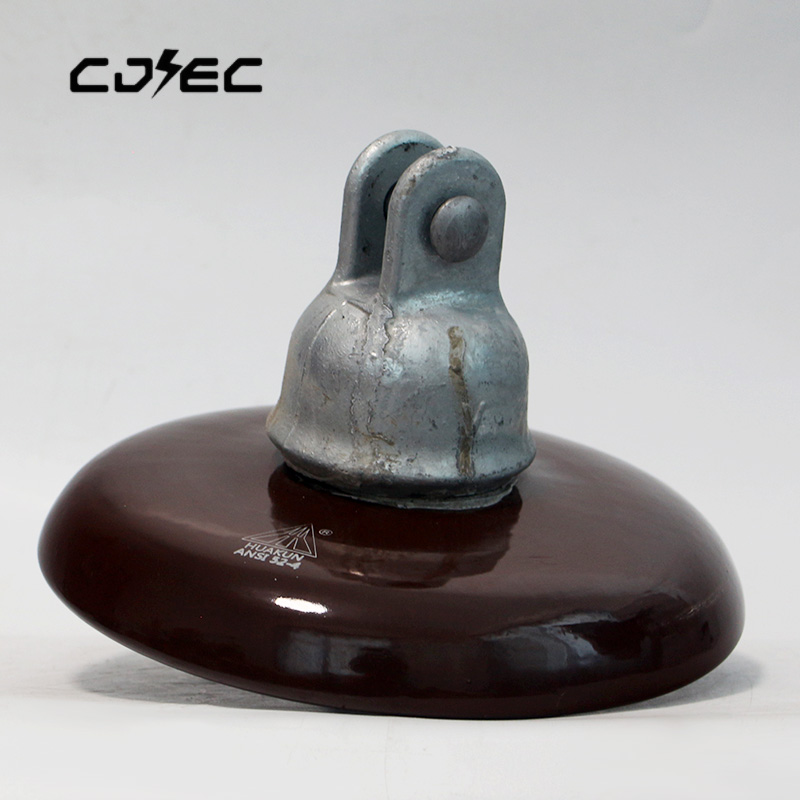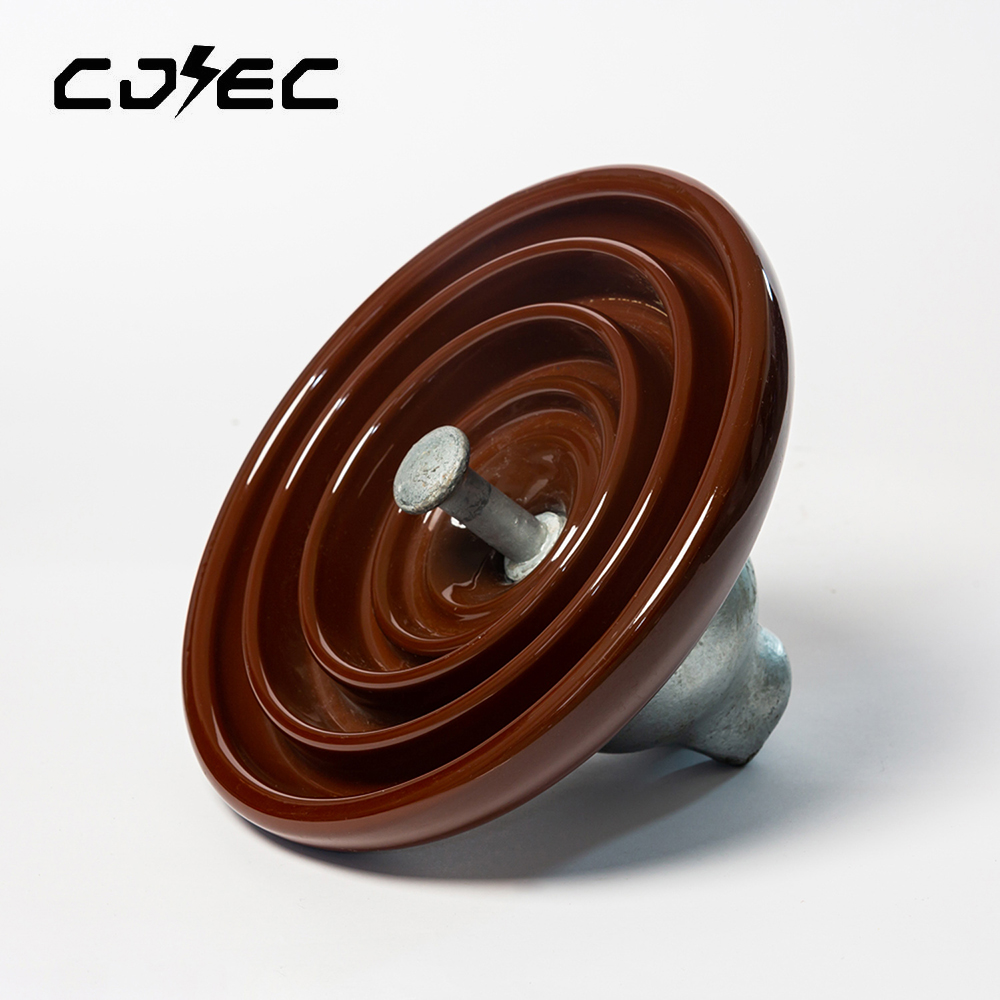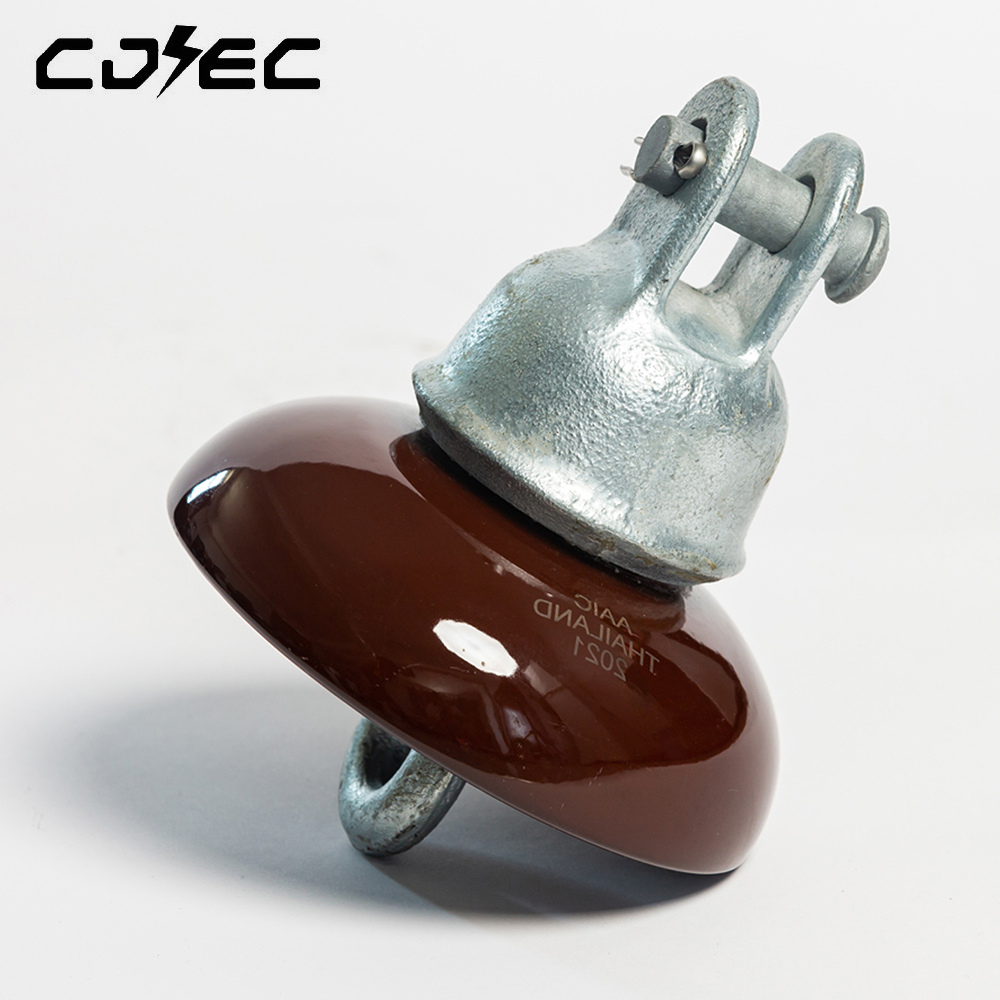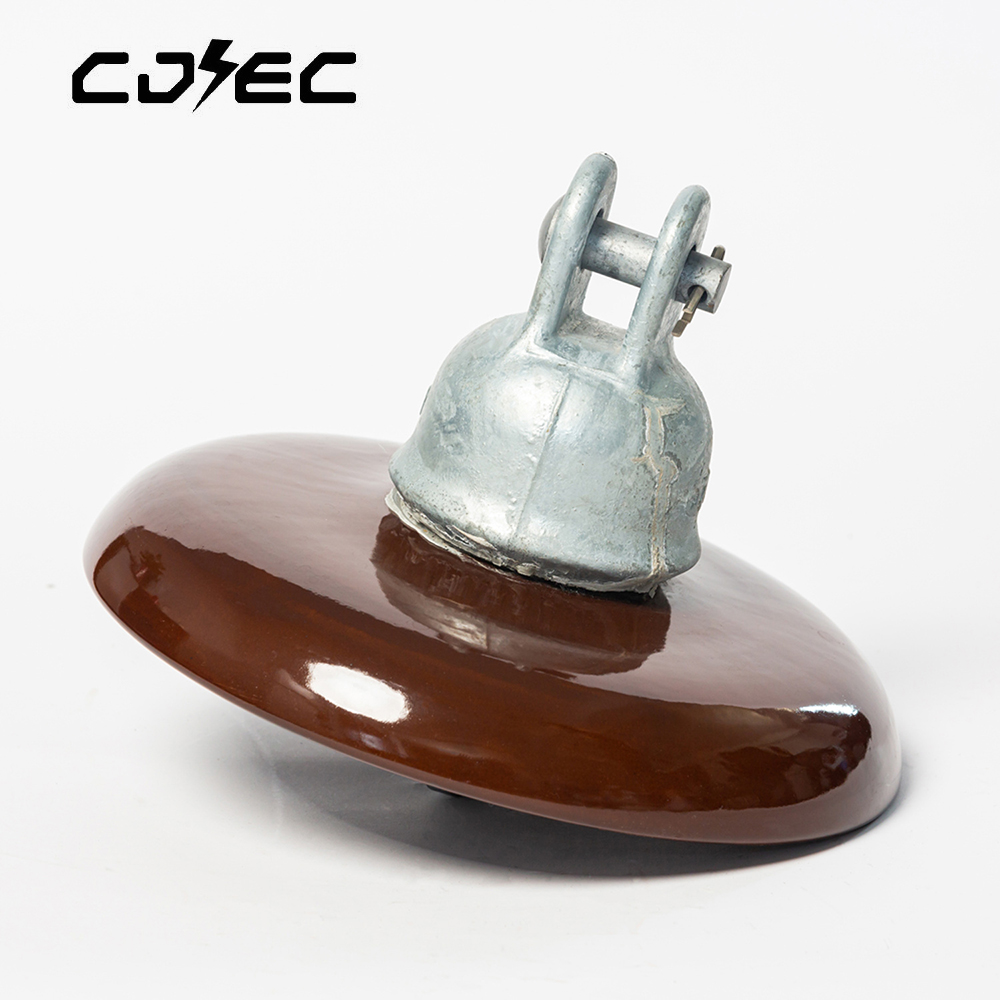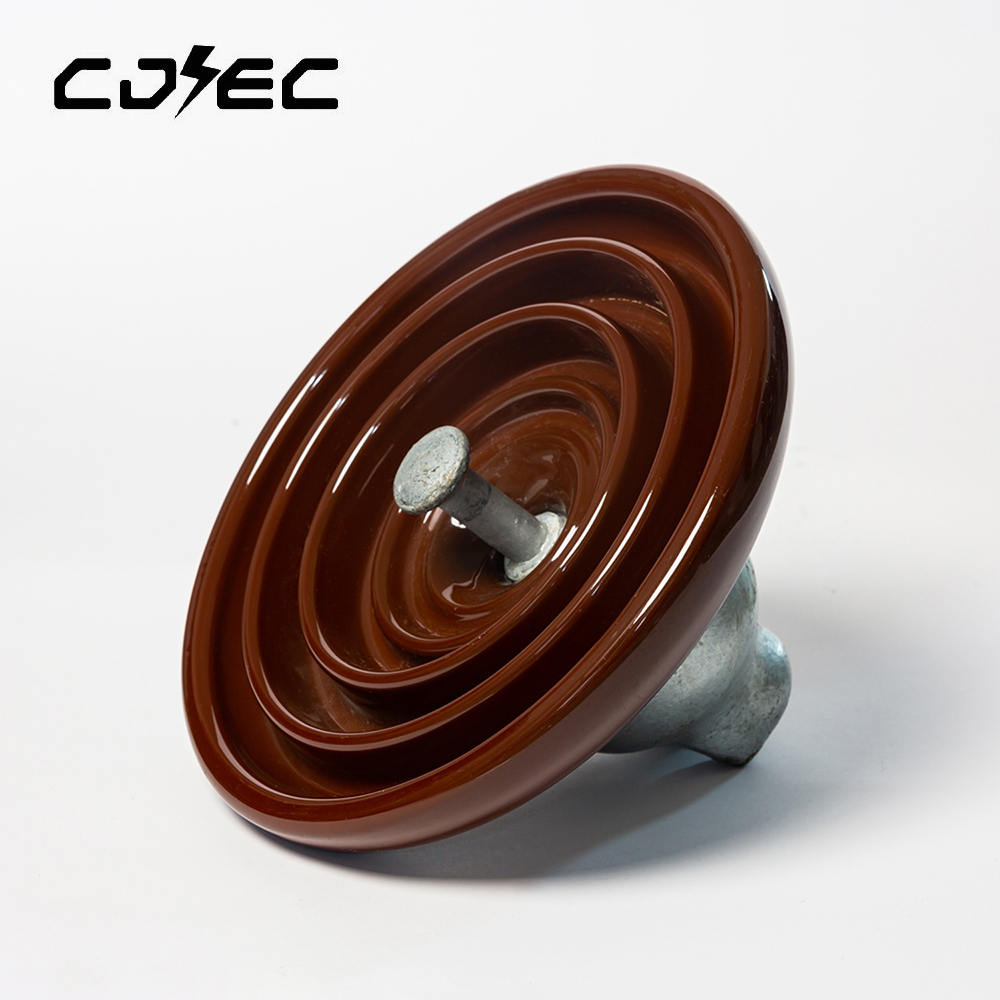111kn ANSI 52-6 High Voltage Outdoor Disc Suspension Porcelain Insulator

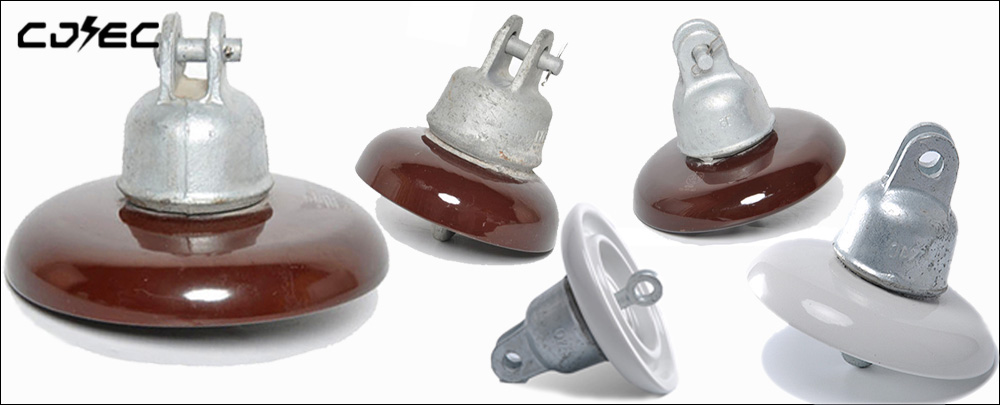

| Clevis type suspension porcelain insulators( ANSI Class ) | ||
| ANSI Class | 52-6 | |
| Coupling size | Type J | |
| Dimensions | ||
| Diameter(D) | mm | 254 |
| Spacing(H) | mm | 146 |
| Creepage distance | mm | 320 |
| Mechanical Values | ||
| combined M&E strength | kN | 111 |
| Dry arcing distance | mm | 197 |
| Impact strength | N.m | 10 |
| Routine proof test load (Maximum working load) | kN | 55.5 |
| Time load test value | kN | 67 |
| Electrical Values | ||
| Low frequency dry flashover voltage | kV | 80 |
| Low frequency wet flashover voltage | kV | 50 |
| Critical impulse flashover voltage,positive | kV | 125 |
| Critical impulse flashover voltage,negative | kV | 130 |
| Low frequency puncture voltage | kV | 110 |
| Radio influence Voltage Data | ||
| Test voltage RMS to ground | kV | 10 |
| Maximum RIV at 1000kHz | μv | 50 |
| Packing and Shipping Data | ||
| Net weight,approximate | kg | 5.5 |
Product Definition
All type porcelain insulators are made from clay, quartz or alumina and feldspar, and are covered with a smooth glaze to shed water.
Porcelain is made from a refined, white clay called kaolin and is fired at temperatures as high as 2,600° Fahrenheit. It is sometimes referred to as “China,” because the manufacturing process was developed centuries ago in that country.
Porcelain also has a solid color throughout, usually white. Porcelain is denser and less absorbent than ceramic, so it can easily withstand moisture and harsher weather conditions. Because of the cost of materials and an intensive manufacturing process, porcelain is more expensive to produce.
Products Use
Suspension Insulator Construction and Working
For voltages greater than 33 kV, it is a usual practice to use suspension type insulators, consisting of a number of glass or porcelain discs connected in series by metal links in the form of a string. The conductor is suspended at the bottom end of this string while the top end is secured to the cross-arm of the tower. The number of disc units used depends on the voltage.
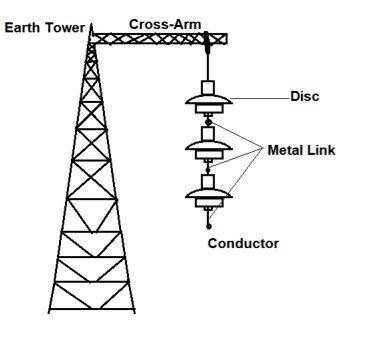
Higher voltage transmission lines usually use modular suspension insulator designs. The wires are suspended from a 'string' of identical disc-shaped insulators that attach to each other with metal clevis pin or ball and socket links. The advantage of this design is that insulator strings with different breakdown voltages, for use with different line voltages, can be constructed by using different numbers of the basic units. Also, if one of the insulator units in the string breaks, it can be replaced without discarding the entire string.

